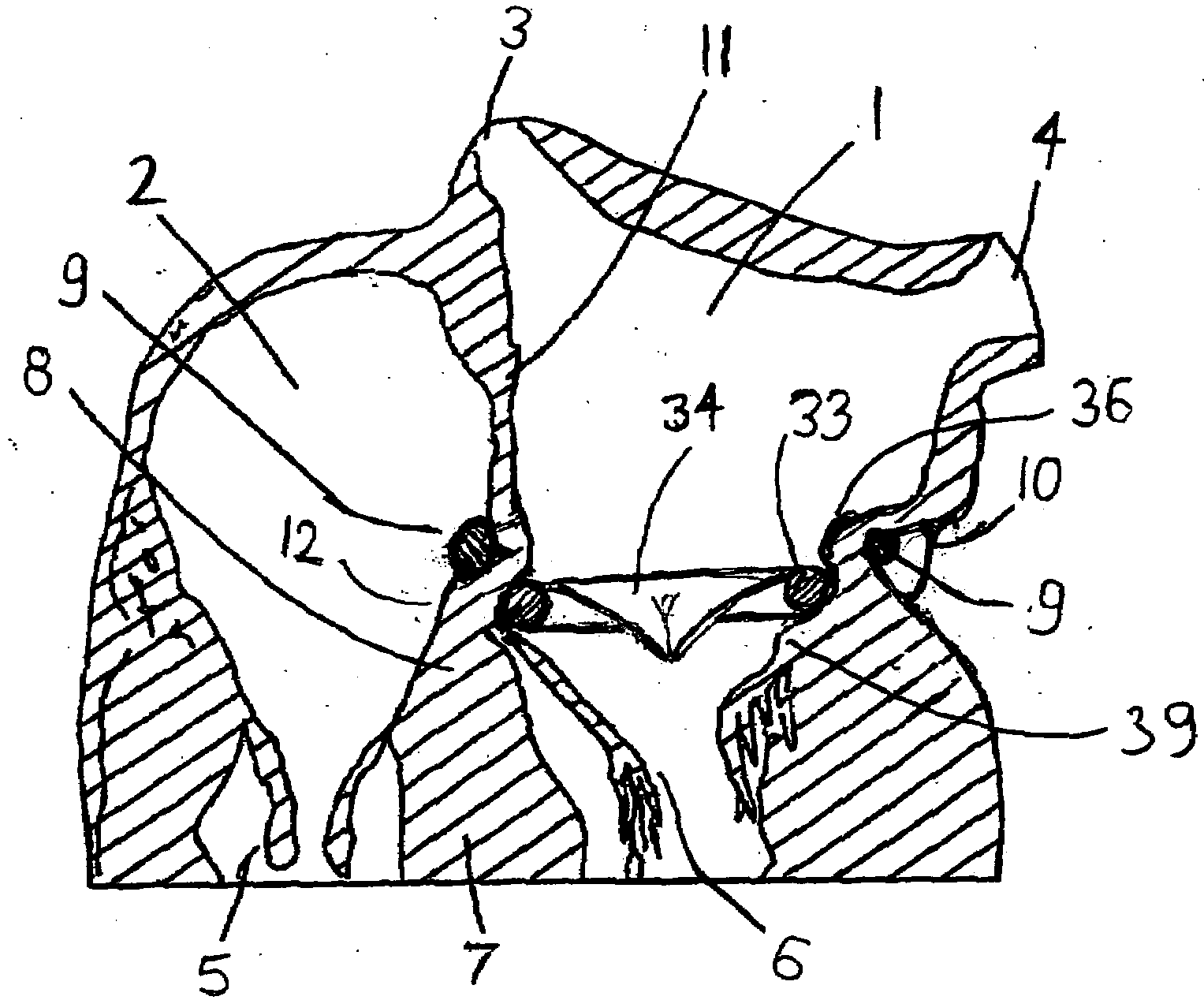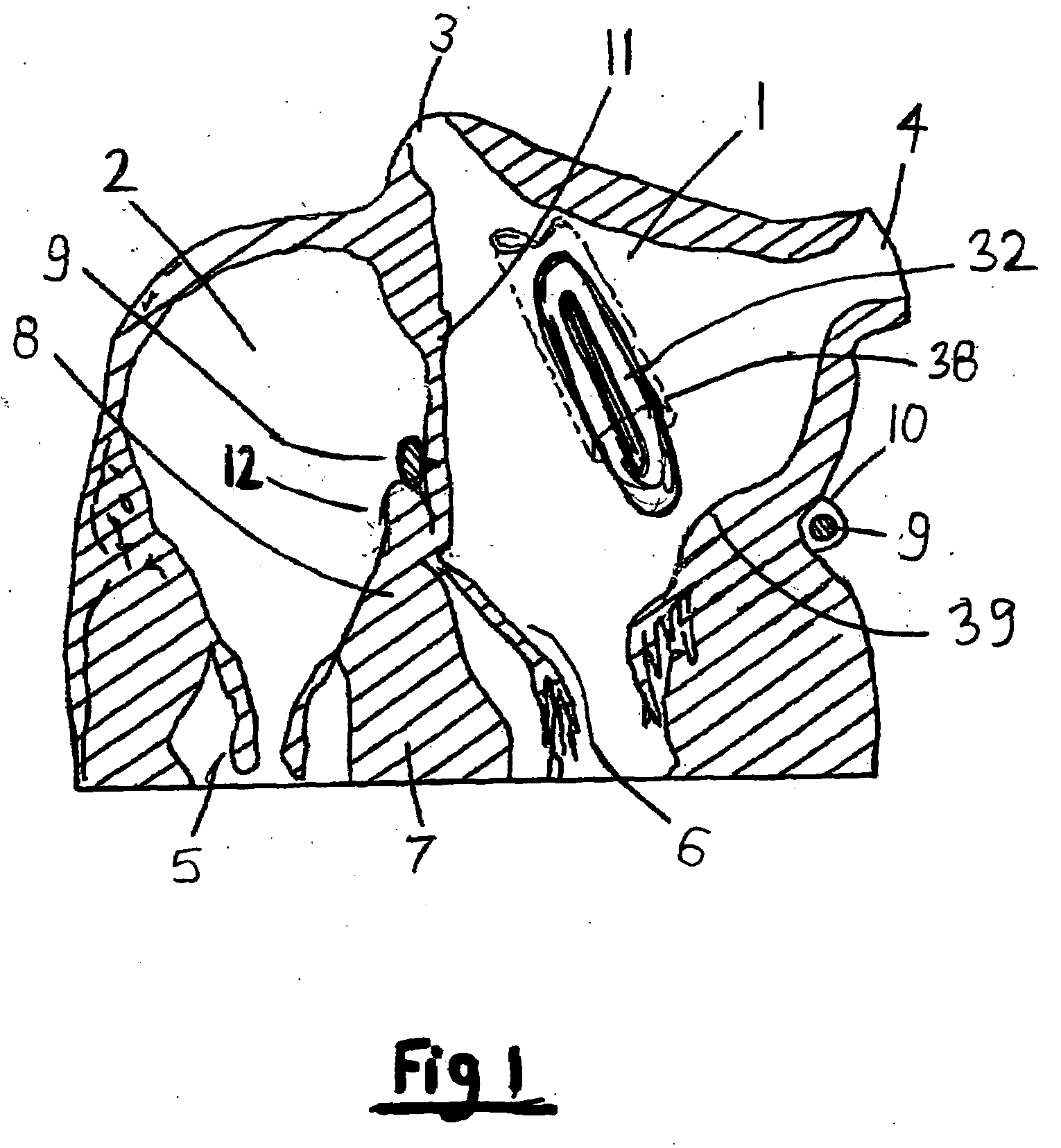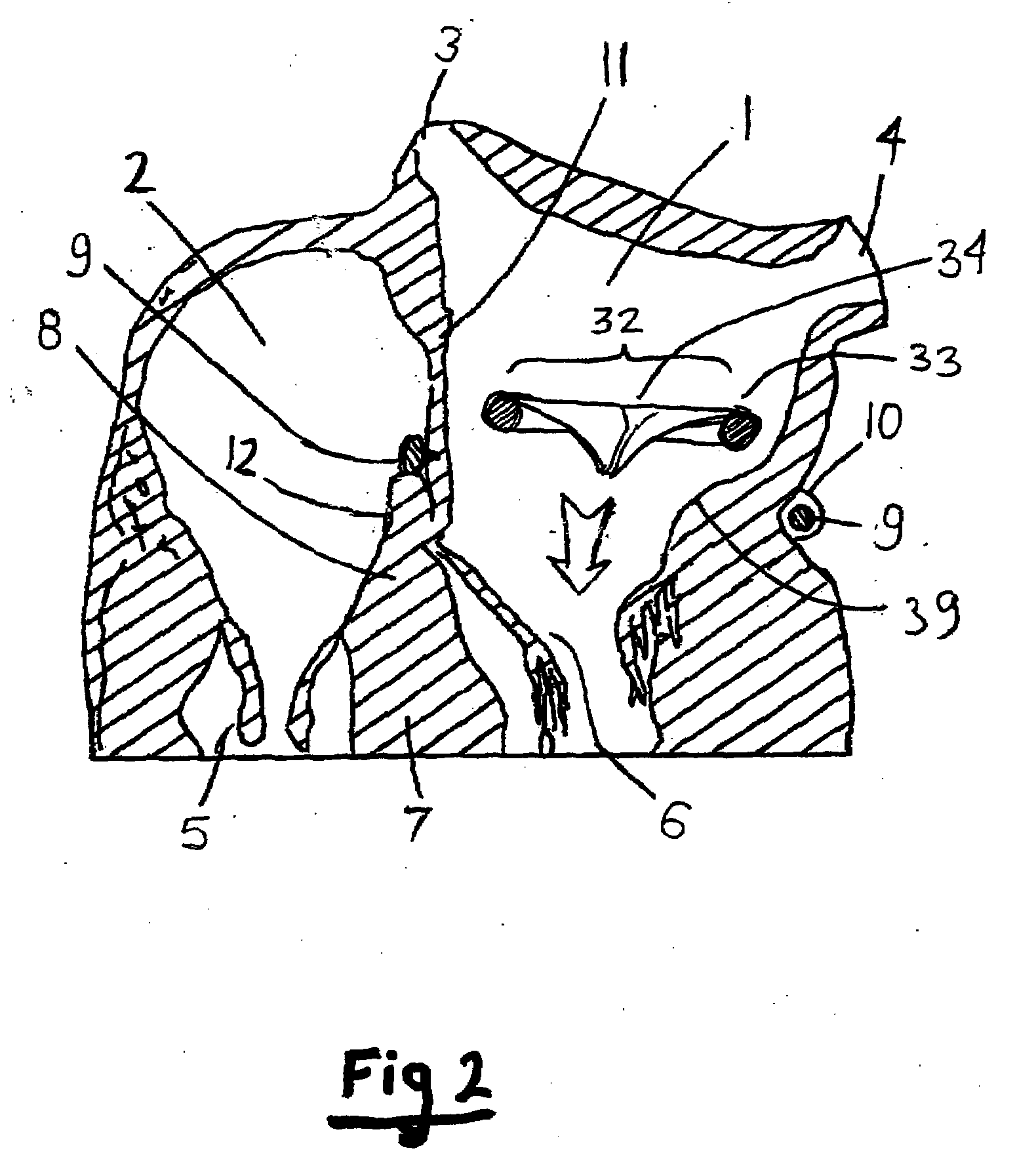Method for anchoring a mitral valve
a technology of mitral valve and anchoring device, which is applied in the field of minimally invasive cardiac surgery, can solve the problems of difficult mitral valve case and inability to perform percutaneous surgery, and achieve the effect of avoiding resection and reducing the risk of resection
- Summary
- Abstract
- Description
- Claims
- Application Information
AI Technical Summary
Benefits of technology
Problems solved by technology
Method used
Image
Examples
Embodiment Construction
[0013]Referring now to FIG. 1, the cross section of the upper part of the heart shows the left atrium 1, the right atrium 2, pulmonary veins 3 and 4, tricuspid valve 5 and mitral valve 6, interventricular septum 7, atrioventricular septum 8, coronary sinus 10, interartial septum 11, and tendon of Todaro12. An artificial mitral valve 32 is introduced into the left atrium to replace a defective mitral valve 6. The artificial valve is of flexible construction in order to be deployed percutaneously via a catheter 38. For deployment it is compressed into an elongated oval shape. The art of percutaneous deployment is well known in minimally invasive surgery. One way to deploy valve 32 is to pass catheter 38 via septum 11, after entering the right atrium via the superior vena cava. The anchoring tool 9 is shown in FIG. 1 already inside the coronary sinus 10. The periphery of mitral valves 6 is less flexible and forms a shape 39 known as the mitral valve annulus.
[0014]Referring now to FIG. ...
PUM
 Login to View More
Login to View More Abstract
Description
Claims
Application Information
 Login to View More
Login to View More - R&D
- Intellectual Property
- Life Sciences
- Materials
- Tech Scout
- Unparalleled Data Quality
- Higher Quality Content
- 60% Fewer Hallucinations
Browse by: Latest US Patents, China's latest patents, Technical Efficacy Thesaurus, Application Domain, Technology Topic, Popular Technical Reports.
© 2025 PatSnap. All rights reserved.Legal|Privacy policy|Modern Slavery Act Transparency Statement|Sitemap|About US| Contact US: help@patsnap.com



